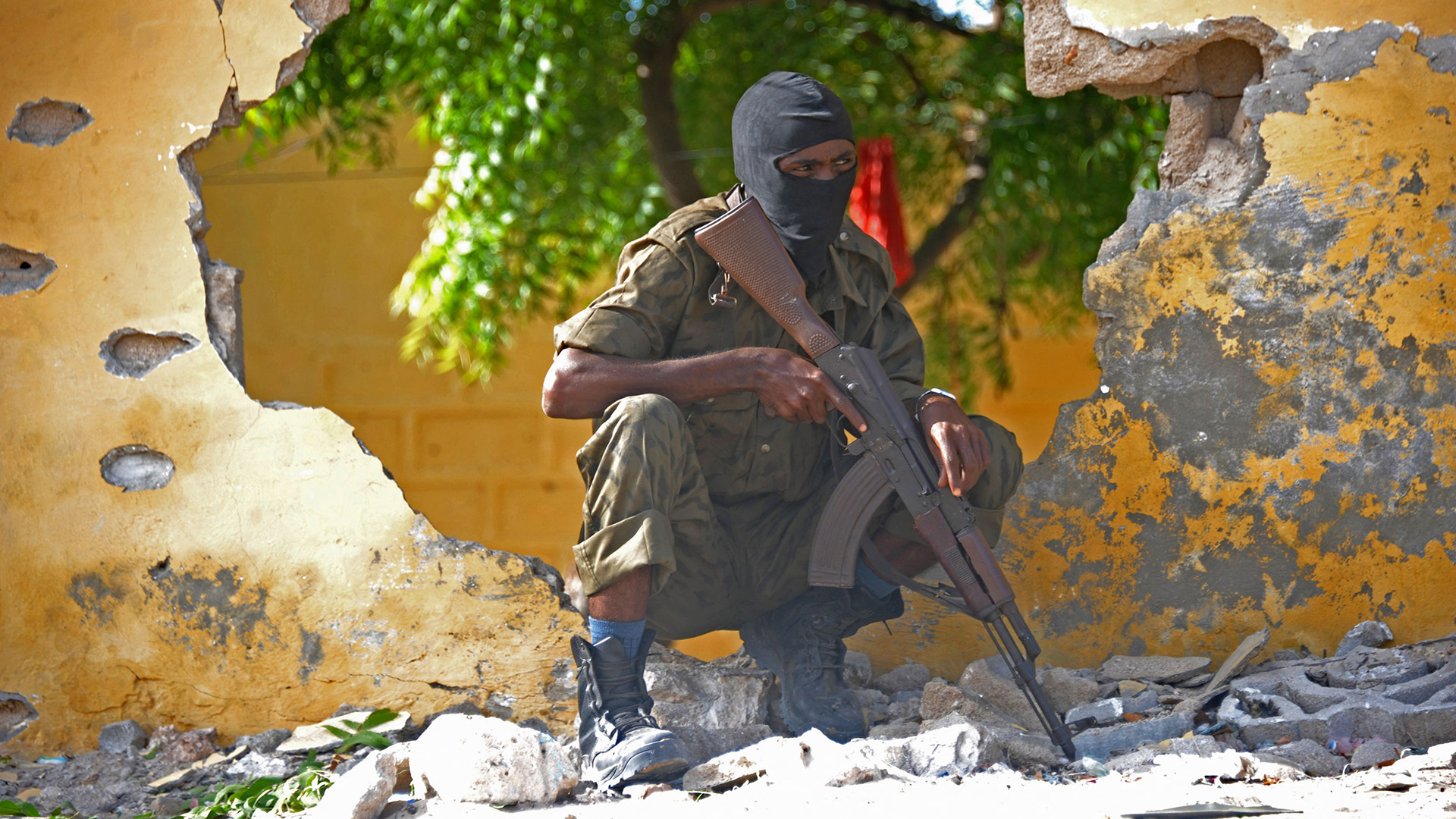

The U.S. military’s latest airstrike in Somalia has killed 13 fighters with al-Shabab as part of the ongoing struggle against al-Qaida and the Islamic State group across the African continent.
No U.S. troops were on the ground during the Aug. 26 airstrike in support of Somali National Army forces that were fighting al-Shabab, according to U.S. Africa Command, or AFRICOM.
The airstrike took place near Seiera, which is about 28 miles northwest of Kismayo in southern Somalia, an AFRICOM news release says. Initial reports indicate no civilians were injured or killed by the airstrike.
“Al Shabaab is the largest and most kinetically active al-Qaeda network in the world and has proved both its will and capability to attack partner and U.S. forces and threaten security interests in the region,” the news release says.
Subscribe to Task & Purpose Today. Get the latest military news and culture in your inbox daily.
Roughly 500 U.S. troops are currently deployed to Somalia.
So far this year, the U.S. military has conducted at least 14 airstrikes in Somalia and one special operations mission that killed ISIS leader Bilal-al-Sudani, according to the Long War Journal, which is produced by the Foundation for Defense of Democracies think tank in Washington, D.C.
“U.S. airstrikes are one of the few things al-Shabaab is afraid of,” said Tricia Bacon, an associate professor at an American University who has analyzed the terrorist group’s objectives. “The strikes have a disruptive effect on al-Shabaab’s operations and training, and they force al-Shabab leaders to prioritize their personal security. They also provide essential support to Somali military operations.”

While the U.S. airstrikes are an important part of the military campaign against al-Shabab, they cannot weaken the group strategically, Bacon said. Defeating al-Shabab involves improving governance in parts of Somalia from where the group has been expelled and limiting al-Shabab’s ability to extort the Somali people for money.
“And there is limited progress on that front,” Bacon said.
U.S. airstrikes in Somalia can also lead to unintended consequences that actually help al-Shabab, said Jocelyn Trainer, an expert on the Horn of Africa with the Center for a New American Security think tank in Washington, D.C.
“First, part of al-Shabaab’s longevity is due to their adaptive recruitment methods — including leveraging U.S. airstrikes for propaganda, highlighting the Somali government’s inability to provide security for civilians, and leveraging existing grievances that people have stemming from the death of loved ones, both innocent civilians and fighters,” Trainer told Task & Purpose.
Al-Shabaab has also proven that it can recover from losses in leaders and foot soldiers caused by U.S. airstrikes, Trainer said.
Moreover, while the number of U.S. airstrikes has gone up and down since 2019, the overall level of violence in Somalia has remained roughly the same, she said.
“If the goal is to maintain or increase U.S. airstrikes in Somalia, then the United States is meeting it,” Trainer said. “If the goal is to reduce the power and presence of al-Shabaab or the Somali government’s reliance on U.S. military assistance, I’m not sure the United States is meeting the mark.”

The Somali government launched an offensive against al-Shabab nearly a year ago, and on Aug. 25 Somali government forces and their allies captured the al-Shabab stronghold of El Buur in the central part of the county.
But al-Shabab continues to fight back hard. Over the weekend, al-Shabab fighters raided the town of Cowsweyne, which had recently been captured by Somali forces.
The fight against al-Qaida and ISIS in Africa is not limited to Somalia. The U.S. military is also trying to stop the growth of both groups in West Africa. But political instability in the region is helping the terrorists.
A recent United Nations report found that the Islamic State in the Greater Sahara had nearly doubled the amount of territory it controls in Mali within the past year, the Associated Press reported.
Moreover, the stalled implementation of a 2015 peace agreement in Mali has allowed al-Qaida’s West African branch known as Jama’a Nusrat ul-Islam wa al-Muslimin, or JNIM, to portray itself with Mali as “the sole actor capable of protecting populations against Islamic State in the Greater Sahara,” according to the Associated Press.
Mali is one of several countries in Africa’s Sahel region that has seen its previous government overthrown by a military coup. Most recently, Niger’s military ousted its democratically elected president in July. Niger has been a strong U.S. partner in the war against terrorism and about 1,100 U.S. American troops are deployed to the country.
Since the coup, the U.S. military has not conducted operations from its two drone bases in Niger, including a base near Agadez that cost $110 million to build.
U.S. military planners are making preparations in case they are ordered to evacuate the two bases in Niger, but no decision on the matter has been made, Air Force Gen. James Hecker, commander of US Air Forces Europe/Africa, told reporters on Aug. 18.
“We are doing a lot of prudent planning, but right now we’re not going anywhere, and we don’t plan to go anywhere until we’re told to go anywhere,” Hecker said during a Defense Writers Group event. “And right now, there’s not a need to go anywhere, so our civilian leadership is just saying, ‘Hey, hang tight, and continue planning in case something happens.’ And we’ll be ready if something happens, but hopefully this thing gets done politically, diplomatically with no bloodshed.”
The latest on Task & Purpose
- Navy destroyer USS Howard’s commanding officer fired
- New ship named after legendary Navy SEAL and Alaska Native
- Women in special operations say bias, double standards are daily realities
- Families of Marines killed in Osprey crash push for more answers
- Two service members arrested after fatal stabbing in Germany